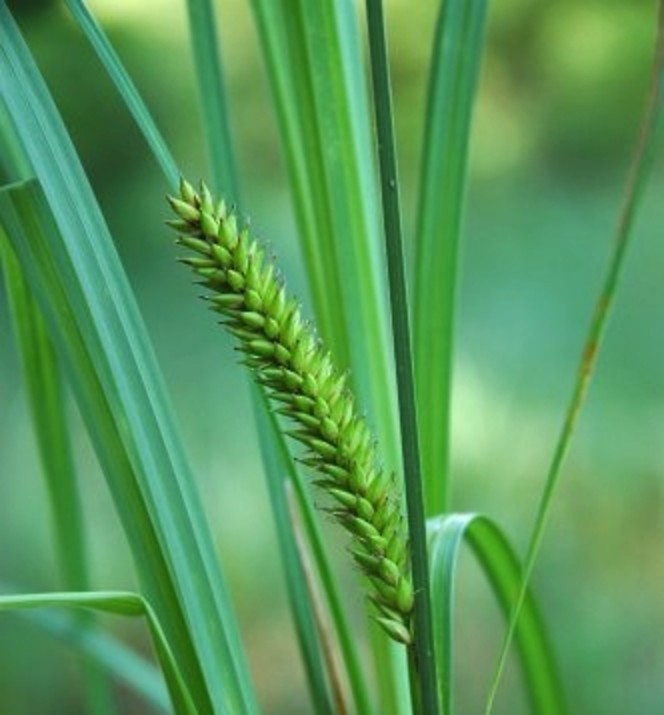Lake sedge
(Carex lacustris)

Description
Carex lacustris, known as lake sedge (lucastris is from the Latin lacus, or lake), is a tufted grass-like perennial of the sedge family (Cyperaceae), native to southern Canada and the northern United States. C. lacustris us an herbaceous surface-piercing plant that grows in water up to 50 cm (1.6 ft) deep, and grows 50–150 cm (1.6–4.9 ft) tall. It grows well in marshes and swampy woods of the boreal forest, along river and lake shores, in ditches, marshes, swamps, and other wetland habitat. It grows on muck, sedge peat, wet sand or silt, in filtered or full sunlight. It's a common sedge that dominates many native wetlands, or intermixes with other sedges and grasses, and its ability to spread by rhizomes makes it a good colonizer for a large area. Stems are typically 50–150 cm (20–59 in) tall. Stems are rough to the touch, and have a triangular cross section, most distinctly near the base. They are green with a conspicuously reddish to purplish tinge at the base. Leaf blades are grayish blue to dark green, grow as long or longer than the stems, and are 8–20 mm wide. They are coarse, and their cross-section is distinctly M-shaped. The sheaths around the stem are smooth, and basal (near the base) sheaths are reddened and have open, feather-like (pinnate) fibers. Flowers on C. lacustris occur along spikes or spikelets, an elongated, tightly-packed type of inflorescence (flower cluster) that contain many small florets. Plants typically have 4–8 green spikes, 2–4 upper spikes that are male (staminate spikes), and 2–4 lower spikes that are female (pistillate spikes). The male spikes are narrow, 3–4 mm wide, 1–8 cm long, and are short-lived. The female spikes are thick, 10–15 mm wide, and 2–10 cm long, either sessile (stalkless) or on short stalks, with 50–100 well-separated florets. Spikes are generally erect, with lower spikes sometimes nodding, and they are sometimes compound. The olive-green perigynium is 5.5–7.3 mm long, hairless, distinctly ribbed, and gradually tapers into a beak. Thin female scales are ovate (tapered at tip) and awned, translucent to purplish or brown in color, and half the length of the perigynia. The fruit or nutlet is a three-sided achene with three stigmas. Carex lacustris has a similar habitat and appearance to Carex atherodes, known as slough sedge or awned sedge, but C. atherodes typically have hairy leaf sheaths rather than smooth, and it has longer teeth (1.5–3 mm) on its parigynia.
Taxonomic tree:







